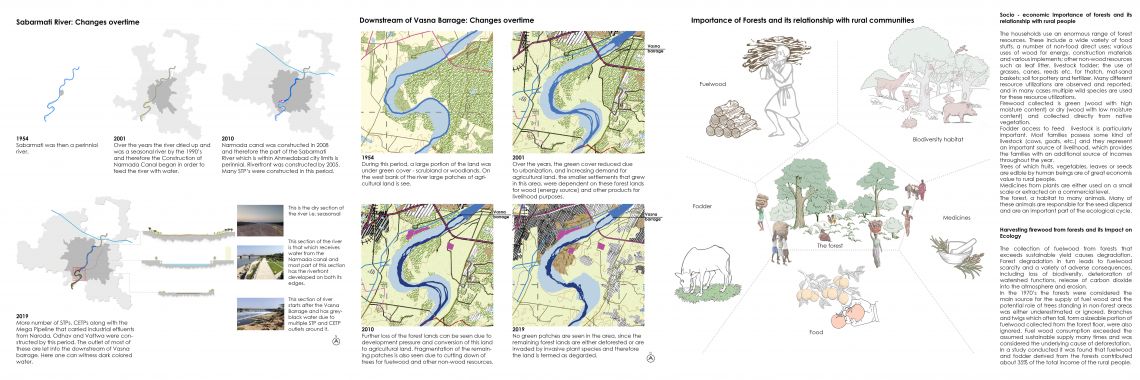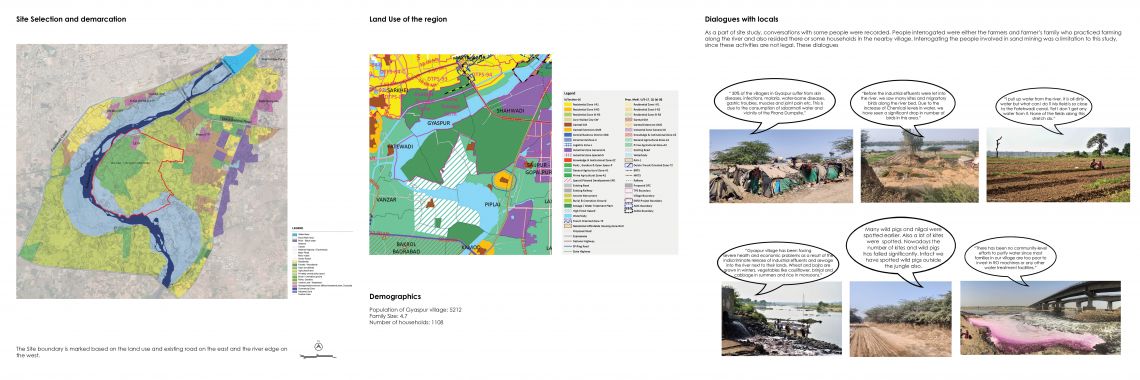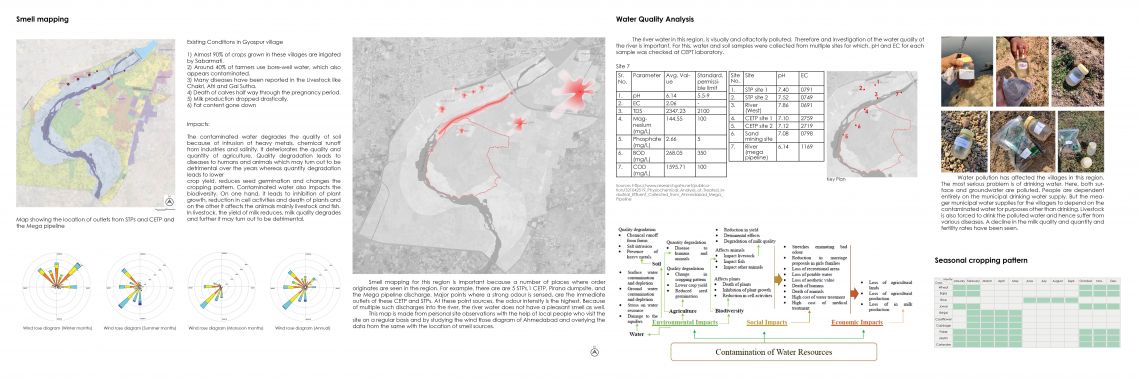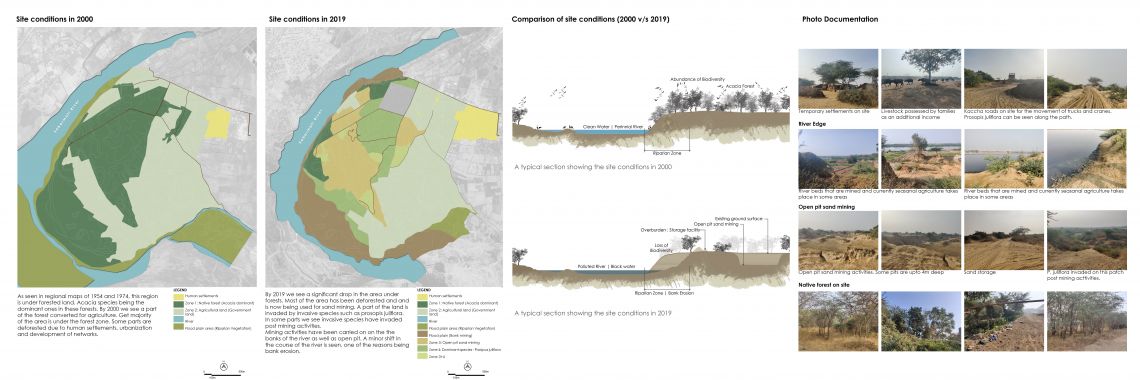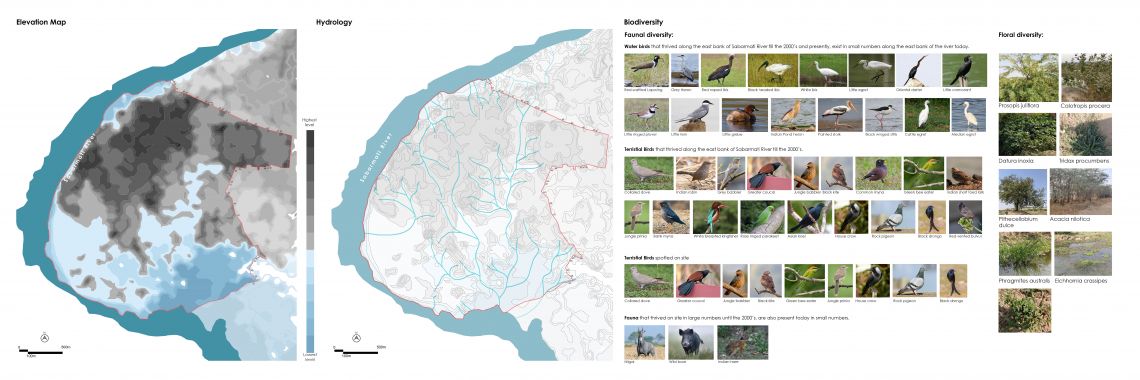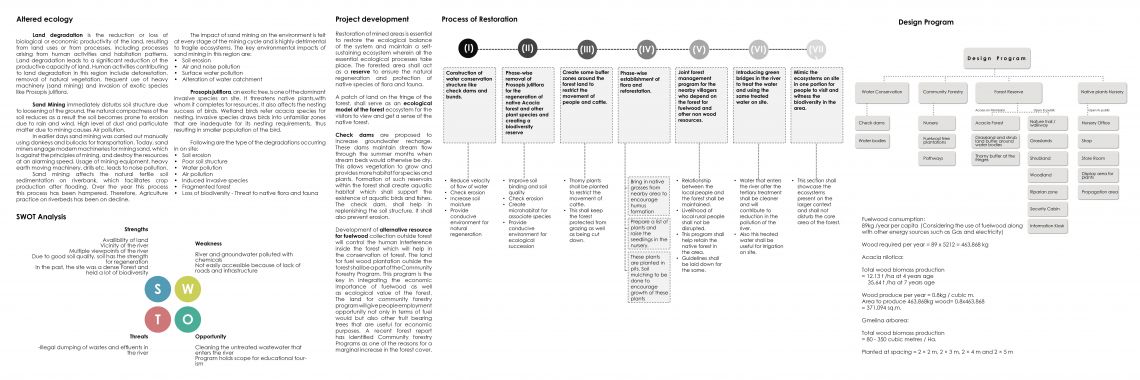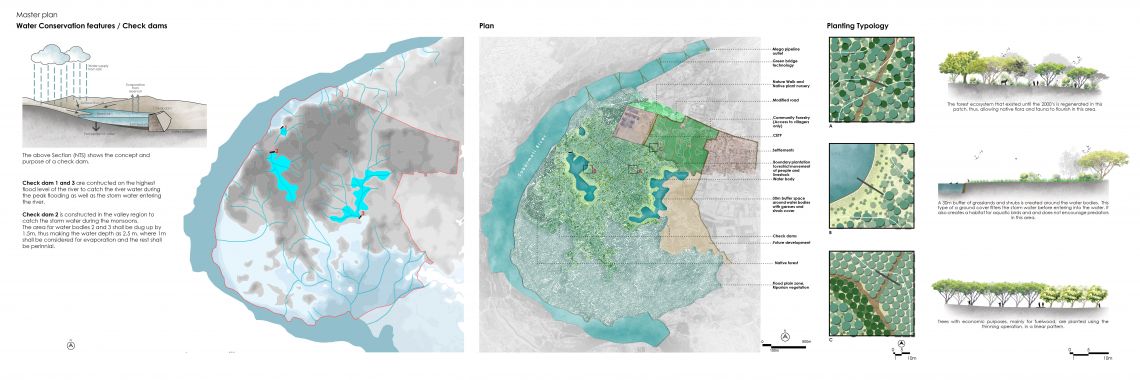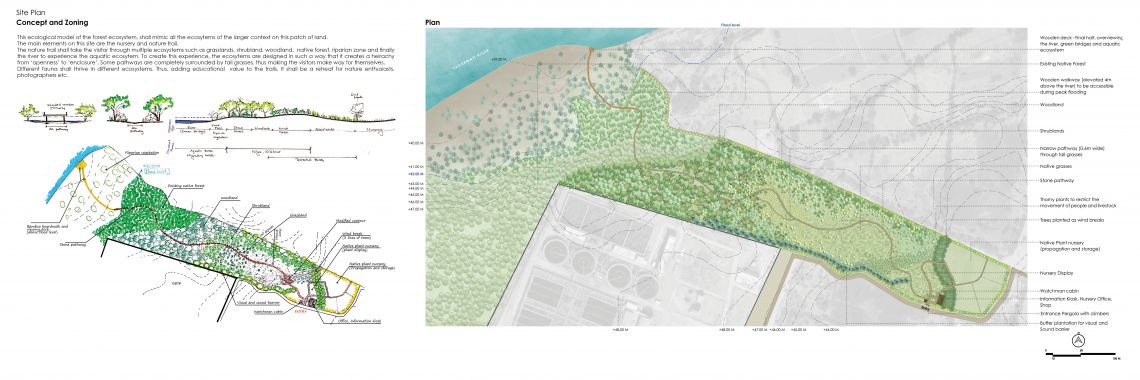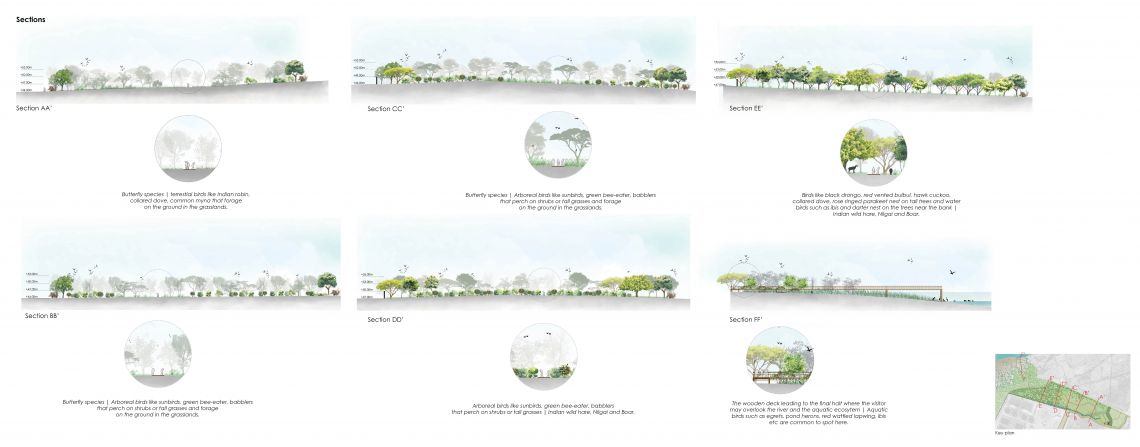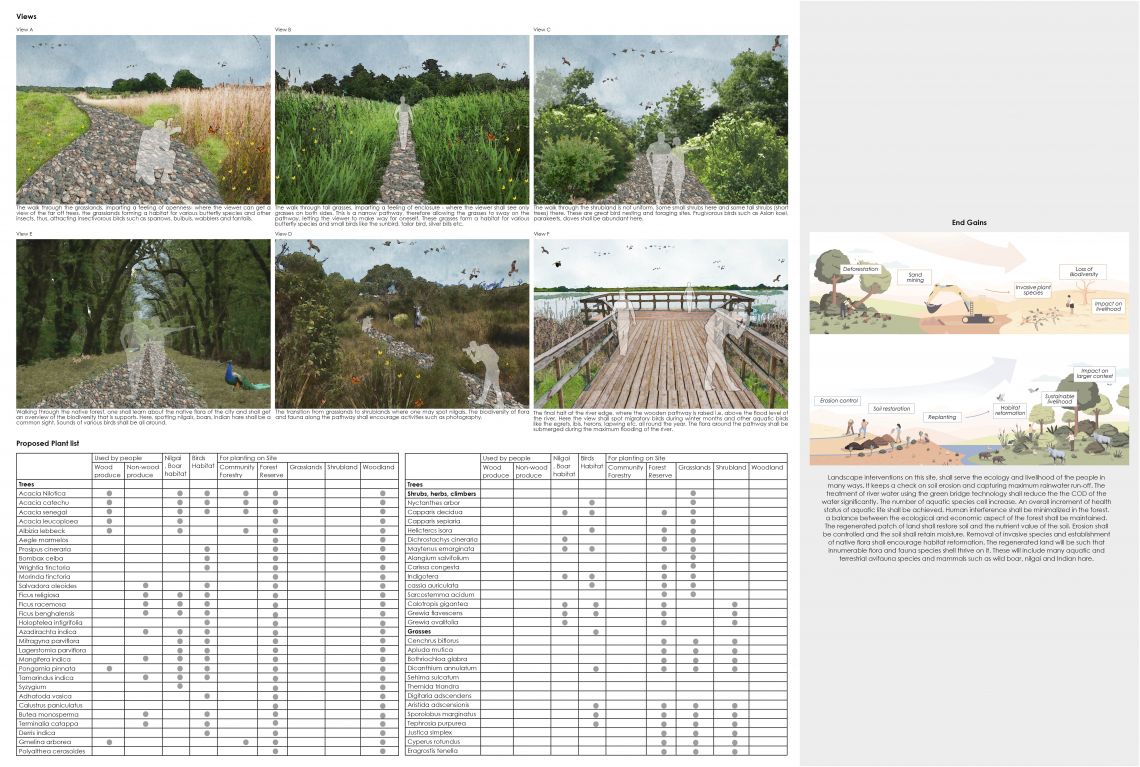At the Conflux : Land, Livelihood and Ecosystem
- Student GURNANI DIKSHAA ISHWAR POOJA
- Code PG190292
- Faculty Architecture
- Unit L4 Studio Unit
- Tutor/s Deepa Maheshwari
Forests have been under tremendous pressure of urbanization and other development activities. Cutting down of these forests and scrub lands along the river and beyond the barrage is prominent. Also, due to the ever-increasing pollution of the river, there is a threat to the biodiversity of the terrestrial, riparian as well as aquatic ecosystem.The villages near the forests and the river edge are dependent on the
forest for livelihood purposes. Forest being the resource for fuel wood, and
other non-wood forest resources, have been gradually exploited leading
to the conversion of the forest land to a barren land. Adding to the degradation of the land, the barren land and the river
bank started being used for extracting sand. The concept of seasonal sand mining vanished and mining activities were
carried on almost every season, causing the riverbed and streamed
completely denuded of sand. The demand for sand has expanded sand
mining in such an uncontrolled manner.
Some parts of the barren land are invaded by Prosipus juliflora
(gando baval), thus causing the remaining native species to not survive in
the area and leading to a further biodiversity and habitat loss.
Vision Statement: Landscape development of a degraded land such that the altered ecology is reversed or modified such that native birds and animals along with migratory ones shall thrive in this area. The ecology shall also aid in the economic benefits to the locals, thus creating a balance between environmental and economic goals.
